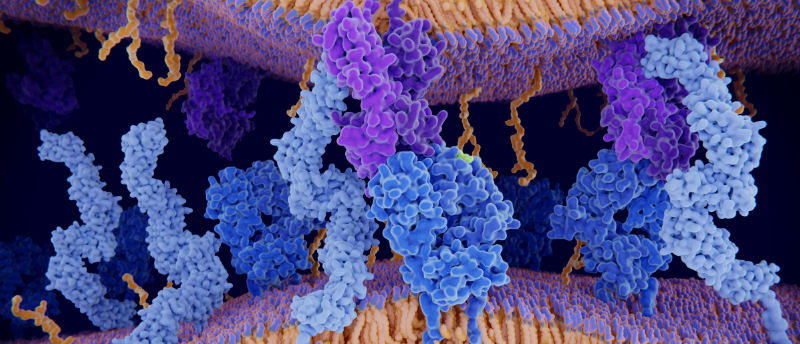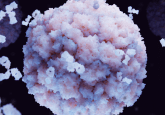Keeping it SIMPL: investigating protein–protein interactions with Igor Stagljar


Credit: Tonko Buterin
Igor Stagljar (right) is a Professor in the Department of Molecular Genetics and Biochemistry at the Donnelly Centre at the University of Toronto (Canada) as well as the Co-Director and Lab Head at the Mediterranean Institute for Life Sciences (Split, Croatia). Stagljar’s group is one of the leading labs in the field of proteomics and chemical genomics, developing high-throughput technologies to facilitate the study of protein–protein interactions (PPIs) with a focus on human membrane proteins involved in cancer.
In this interview, we discuss why targeting disease-associated PPIs is an attractive option for drug discovery and development, what technologies Stagljar and his lab have developed and where PPI research is headed in the future.
Can you tell me a bit about the technologies you’ve developed for PPI research?
Originally, we developed a technology, called membrane yeast two-hybrid (MYTH), that mapped membrane protein interactions in vivo using yeast as the host. Around 2010, we decided to transition to a mammalian membrane two-hybrid assay, called MaMTH, which was published in 2014 and developed by Julia Petschnigg and Jamie Snider in my lab. This assay is a ‘cousin’ of MYTH, adapted for use in human cells, with both using split-ubiquitin-based systems. Alongside MaMTH, we started to develop a totally novel PPI assay, which is not based on ubiquitin, called SIMPL. SIMPL was developed two years ago by Zhong Yao in my lab and uses split inteins, proteins that naturally occur in lower organisms, directly as sensors for PPI detection in mammalian cells, in a way that no one has ever done before.
SIMPL is a highly sensitive assay with the ability to detect stable, transient and conditional PPIs in any cellular space. It can also be applied to virtually any human protein in any human cell line. The assay is fast, quantitative, simultaneously applicable to thousands of proteins and suitable for drug discovery. We are also now preparing a new manuscript that will describe a high-throughput version of SIMPL, linked to the nanoluciferase enzyme, with the potential to be as sensitive as Promega’s NanoBIT assay. Importantly, nanoluciferase-coupled SIMPL greatly reduces workload and profoundly increases assay quantifiability.
What kind of data does SIMPL generate and how can this data inform PPI mapping and drug discovery?
We can accomplish two different things with SIMPL. The first is that we can study whether a protein of interest interacts with other proteins. Currently, we are developing libraries of all human open reading frames (ORFs) that are fused to one part of an intein protein. We will then be able to screen these libraries, in a high-throughput format, to determine which ORFs interact with specific human bait proteins (which can be localized to any cellular compartment).
The second thing we can do with SIMPL is study the inhibition and stimulation of PPIs using small molecule drugs. Currently, the only FDA-approved small molecule drug that targets PPIs is venetoclax, which was developed by Genentech and AbbVie. Venetoclax inhibits the interaction between BCL-2 and BAX on the outer mitochondrial membrane and, by doing so, directs cells to undergo apoptosis. It’s currently being used to treat several forms of leukemia.
There are many more projects now being explored in the pharma industry with the goal of identifying inhibitors of PPIs. For instance, we’re doing a lot of artificial intelligence (AI)-directed screens of drug compounds/small molecules with the potential to target pathological PPIs, collaborating with major companies like Amgen and Evotec.
Why is targeting PPIs an attractive option when developing drugs?
If you had suggested 15 years ago that targeting PPIs could be a way to cure some diseases, most people in the industry would have said that you were nuts. They would have said it’s impossible to block these PPIs due to their large but shallow interaction surfaces. Not everyone felt this way however, and some researchers (including myself) argued that it was possible to block PPIs by only mutating a single amino acid. So, we had some interesting discussions back then. But fortunately, when Genentech and AbbVie came up with venetoclax, it really changed everyone’s perspective and initiated a lot of new projects. It informed the pharmaceutical industry that this approach would work, and now there are hundreds of projects in the biotech and pharma industries that are working to identify inhibitors of PPIs.
What does the future hold for PPI research?
I believe we are only scratching the surface. There’s a multitude of avenues to explore. Currently, PPI maps remain static, typically created under specific conditions and within a single cell line. However, many PPIs are dynamic and responsive to various conditions, such as different cell lines or the presence of specific treatments or stimuli. I see our next objective in PPI research as understanding the regulation of PPIs at multiple levels. This entails identifying in which cell lines, tissues and organs specific PPIs occur, elucidating the factors that enhance different PPIs and investigating how drugs influence PPI regulation, among other aspects.





